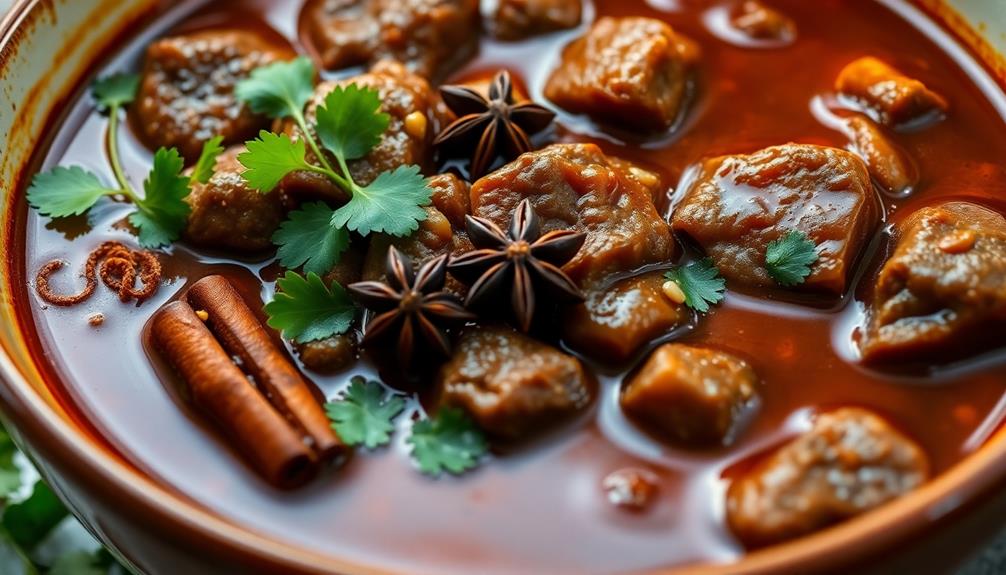Step into the vibrant world of Kue Putu, Indonesia's beloved bamboo-steamed rice cake! This centuries-old delicacy enchants with its unique shape, crafted by steaming rice batter in bamboo tubes – a nod to the country's rich culinary heritage. Made with a simple yet delectable blend of rice flour, coconut milk, and palm sugar, Kue Putu boasts a soft, sticky texture and a sweet, caramelized filling that tantalizes the taste buds. Enjoyed as a snack or dessert, it's a cherished symbol of hospitality and cultural connection, often found at family gatherings and street markets. Intrigued to learn more about this captivating Indonesian treat? Look no further than Kue Putu’s charming presence at local festivities and traditional ceremonies, where its comforting aroma and delightful flavor are celebrated. Pair a plate of Kue Putu with a cup of fragrant Indonesian coffee or a refreshing glass of iced tea for a truly indulgent experience. And don’t forget to savor this delightful snack alongside a popular Indonesian noodle dish, such as Mie Goreng or Mie Ayam, for a complete culinary adventure through Indonesia’s diverse and delicious cuisine.
Key Takeaways
- Kue Putu is a traditional Indonesian rice cake with a unique shape and flavor, originating in the 17th century and deeply rooted in local culinary traditions.
- The key ingredients for Kue Putu include rice flour, coconut milk, and palm sugar, which are steamed in bamboo tubes to achieve its distinctive texture and aroma.
- Preparation of Kue Putu involves soaking bamboo leaves, grinding the rice flour mixture, and steaming the filled bamboo leaves to create the final product.
- Kue Putu is commonly consumed as a snack or dessert, often served warm and accompanied by fresh grated coconut or additional palm sugar, evoking nostalgia and cultural pride.
- Nutritionally, Kue Putu offers a balance of carbohydrates, healthy fats, and fiber, making it a wholesome option when consumed in moderation as part of a balanced diet.
History
When did the iconic Indonesian steamed rice cake, Kue Putu, first emerge? Historians believe this delightful treat has origins dating back to the 17th century. It was likely inspired by similar rice-based snacks enjoyed across Southeast Asia.
In the early days, Kue Putu was often served during special occasions and celebrations. The unique shape, made by steaming the rice batter in hollowed-out bamboo tubes, gave the cake a distinctive look and texture.
As the popularity of Kue Putu grew, it became a beloved part of Indonesian culinary traditions.
Over time, the recipe evolved, with creative cooks experimenting with different fillings and flavors. Today, you can find Kue Putu made with a variety of ingredients, from the classic brown sugar and coconut to more modern variations.
No matter the recipe, this timeless treat remains a cherished icon of Indonesian cuisine, connecting generations through its delicious and unique taste.
Recipe
Kue Putu is a traditional Indonesian steamed rice cake with a sweet palm sugar filling. It's a popular snack that's often enjoyed as a breakfast or afternoon treat.
The unique flavor and texture of Kue Putu comes from the combination of the chewy rice flour dough and the gooey, caramelized palm sugar filling. The steaming process also imparts a delightful aroma that makes this treat irresistible.
Ingredients:
- 200 grams rice flour
- 100 grams tapioca flour
- 1/2 teaspoon salt
- 150 milliliters coconut milk
- 50 grams grated fresh coconut
- 100 grams palm sugar, chopped
Cooking Instructions:
In a large bowl, mix the rice flour, tapioca flour, and salt. Gradually add the coconut milk, stirring constantly until a smooth, pliable dough forms.
Divide the dough into small, equal-sized balls. Press a small amount of palm sugar into the center of each ball, then shape the dough around the filling to completely enclose it.
Place the filled dough balls in a greased steamer and steam for 15-20 minutes, or until cooked through.
To ensure the best texture and flavor, it's important to use fresh, high-quality ingredients. The palm sugar should be grated or chopped into small pieces to allow it to melt evenly during the steaming process.
Serve the Kue Putu warm, garnished with the grated fresh coconut, for a truly authentic and delightful experience.
Cooking Steps
First, you'll need to soak the bamboo leaves overnight to get them ready.
Next, grab your rice flour and mix it all up.
Once that's done, it's time to steam the rice mixture until it's just right.
Now, carefully fill those bamboo leaves and serve your warm, fresh kue putu!
Step 1. Soak Bamboo Leaves Overnight
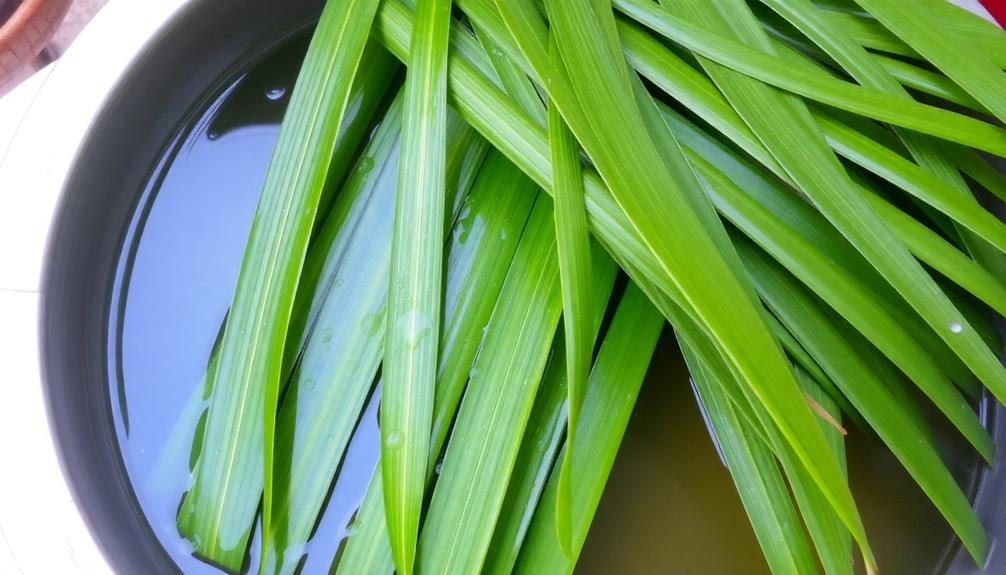
Soaking the bamboo leaves overnight is a crucial step in preparing the perfect Kue Putu. These leaves will serve as the outer layer, or wrapper, for the delicious rice cakes.
Start by gathering fresh bamboo leaves. They should be green, pliable, and free of any blemishes or tears. Gently rinse the leaves under cool running water to remove any dirt or debris.
Next, place the leaves in a large bowl or container and cover them with water. Let them soak for at least 8 hours, or overnight. This softens the leaves, making them more pliable and easier to work with when it's time to assemble the Kue Putu.
Once the soaking is complete, drain the leaves and pat them dry with a clean towel. They're now ready to be used in the next step of the recipe.
Soaking the bamboo leaves is an essential preparation that ensures your Kue Putu will have a beautifully wrapped, tender exterior.
Step 2. Grind Rice Flour Mixture
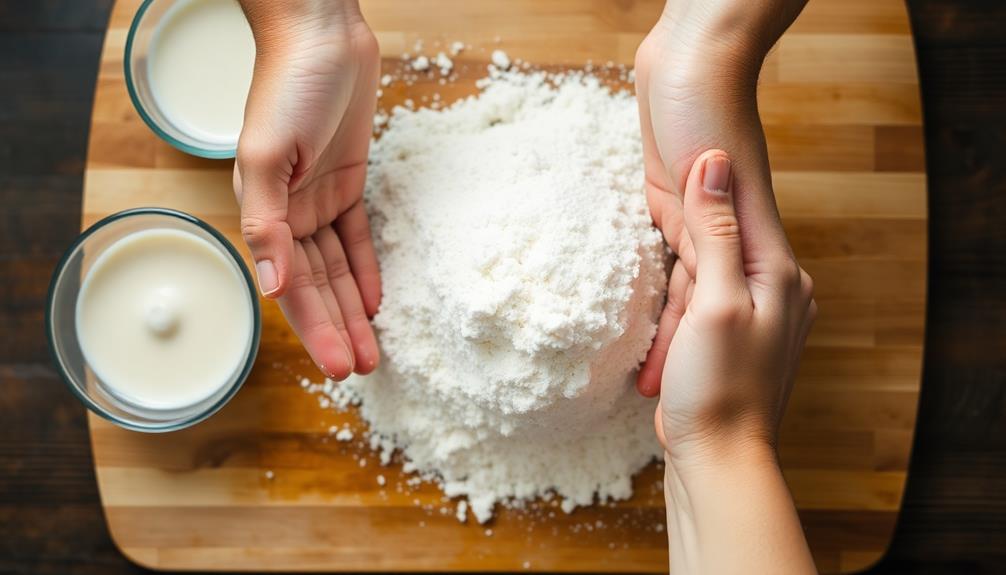
To prepare the rice flour mixture, you'll need to grind the core ingredients. Start by gathering your rice flour, palm sugar, and salt.
You'll want to use a mortar and pestle to grind these together into a fine, even consistency. Gently spoon the rice flour into the mortar, followed by the palm sugar and a pinch of salt.
Begin grinding the mixture in a circular motion, applying steady pressure. Keep going until the grains of rice flour have been completely broken down, and the palm sugar has been fully incorporated.
The goal is to create a smooth, powdery texture that will come together beautifully when you add the water later on.
Take your time with this step – the more thoroughly you grind the ingredients, the better the final kue putu will turn out. Once you're satisfied with the consistency, you're ready to move on to the next part of the process.
Step 3. Steam the Rice Mixture
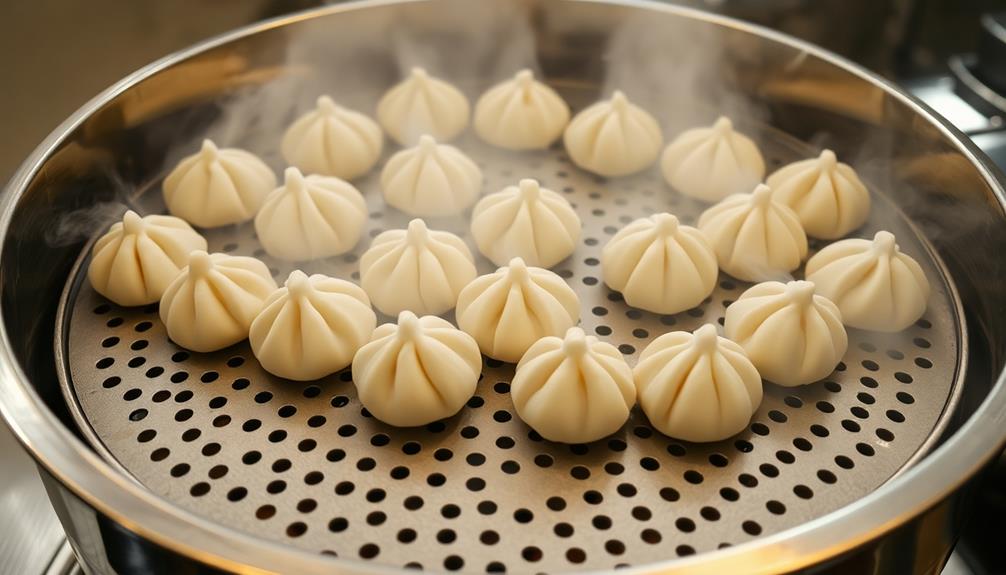
The next step is to steam the rice mixture.
You'll need a steamer pot or a bamboo steamer lined with banana leaves. Gently place the rice mixture into the steamer, being careful not to pack it down too tightly. This allows the steam to circulate evenly and cook the putu perfectly.
Set the steamer over a pot of boiling water, making sure the water doesn't touch the bottom of the steamer. Cover the steamer with a lid and let the rice mixture steam for about 15-20 minutes.
The putu should turn a lovely, vibrant green color as it cooks.
Keep an eye on the water level and add more boiling water if needed to maintain the steam. When the putu is done, the grains will be soft and tender.
Carefully remove the steamer and let the putu cool slightly before serving. The fragrant, steamed rice cakes are now ready to enjoy!
Step 4. Fill Bamboo Leaves
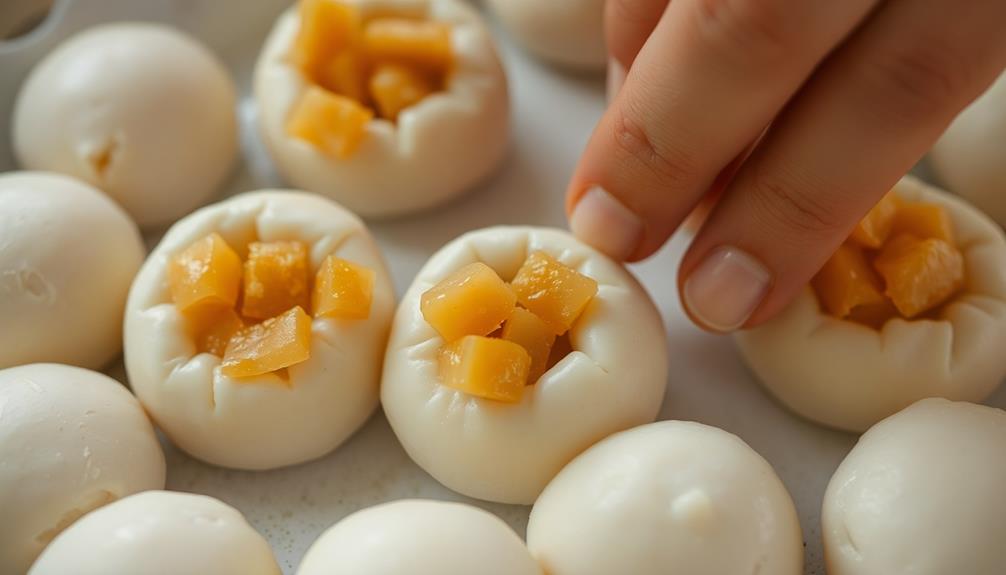
After the rice mixture has been steamed, it's time to fill the bamboo leaves.
Grab a piece of bamboo leaf and place a spoonful of the warm, fragrant rice mixture in the center. Carefully fold the leaf over, creating a little packet. Secure the packet with a small bamboo skewer or toothpick to keep it closed.
Repeat this process, filling each bamboo leaf until you've used up all the rice mixture.
Be gentle as you handle the delicate leaves – you don't want to tear them. Arrange the filled bamboo packets on a serving platter or steamer basket, preparing them for the final steaming step.
The aroma of the steamed rice and fragrant leaves will have your mouth watering!
Soon, you'll be able to unwrap these little bundles of joy and savor the warm, sticky-sweet goodness inside. Get ready for a truly authentic Indonesian treat.
Step 5. Serve Warm and Fresh

Once the bamboo packets are arranged, it's time to steam them. Carefully place the filled bamboo leaves into a steamer, making sure they're not crowded. Cover the steamer and let the cakes steam for about 15 minutes.
As the timer ticks down, the scent of the warm, fragrant putu will start to fill the air, making your mouth water in anticipation.
When the timer goes off, it's time to serve these delightful treats. Using tongs, gently remove the steaming hot bamboo packets from the steamer. Be careful, as the leaves will be very hot.
Unwrap the packets to reveal the soft, fluffy putu cakes inside. Serve them immediately while they're still warm and fresh, as this is when they'll be at their absolute best.
The soft, sticky texture and sweet, coconutty flavor are simply irresistible. Enjoy these traditional Indonesian delights with family and friends, savoring every bite.
Final Thoughts
As we reach the conclusion of our exploration of Kue Putu, it's clear that this traditional Indonesian delicacy holds a special place in the hearts and culinary traditions of the region.
The combination of the warm, fluffy rice cake, the sweet palm sugar filling, and the fresh pandan leaf aroma creates a truly unique and satisfying experience.
While Kue Putu may seem simple, its preparation requires skill and attention to detail. The steaming process, the careful shaping of the dough, and the perfect timing of the final cooking all contribute to the perfection of this beloved treat.
As you savor each bite, you can't help but appreciate the rich history and cultural significance that Kue Putu carries.
Whether you're enjoying it as a morning snack or an afternoon pick-me-up, Kue Putu is a delightful reminder of the joys of traditional Indonesian cuisine.
As you venture forth, we hope you'll keep this special cake in mind and seek out opportunities to indulge in its comforting and delicious flavors.
Frequently Asked Questions
How Long Can Kue Putu Be Stored?
Freshly made, you can store the cakes for up to 3 days in the fridge. However, they won't last much longer as the texture and flavor will start to deteriorate. For best quality, enjoy them within a day or two.
Can Kue Putu Be Made Without Bamboo?
Yes, you can make this traditional rice cake without using bamboo. Instead, you can use other steaming vessels like a metal or silicone mold to achieve the same texture and flavor.
Is Kue Putu Gluten-Free or Vegan-Friendly?
Yes, kue putu can be made gluten-free and vegan-friendly. You can use rice flour, coconut milk, and palm sugar to create a delicious and allergy-friendly version of this traditional Indonesian snack.
What Is the Traditional Way to Serve Kue Putu?
Traditionally, you'd serve kue putu steaming hot, often with a sprinkle of grated coconut and a drizzle of palm sugar syrup. It's a delightful combination of textures and flavors that makes for a tasty and authentic Indonesian treat.
Can Kue Putu Be Frozen for Later Use?
Can you freeze kue putu for later use? Absolutely! Cooked kue putu can be frozen for up to 2 months. Just reheat them in a steamer when ready to serve, and you'll enjoy that signature taste and texture.






